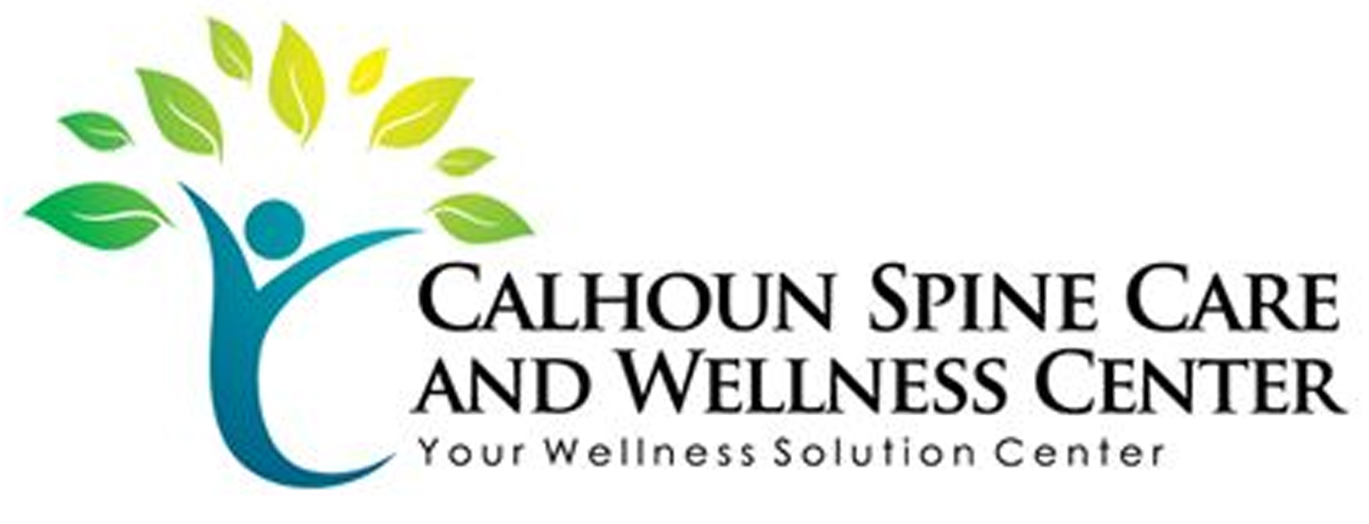If you're dealing with sciatica pain in Calhoun, you might find relief through a combination of targeted adjustments. From personalized stretching to chiropractic care, each method plays an essential role in managing your discomfort. You'll discover how simple changes—like ergonomic improvements and heat therapy—can greatly impact your daily life. But what about the most effective techniques that can bring lasting relief? Understanding these options could change the way you approach sciatica pain management.
Stretching Exercises
Many people find that incorporating stretching exercises into their routine can greatly alleviate sciatica pain. By keeping your muscles flexible and reducing tension, you can help improve your overall mobility and ease discomfort. Stretching not only targets the lower back but also addresses the hamstrings, hip flexors, and glutes, which can all contribute to sciatic nerve irritation.
Start with a simple hamstring stretch. Sit on the floor with one leg extended and the other bent. Reach toward your toes on the extended leg, feeling the stretch in the back of your thigh. Hold for 15-30 seconds, then switch legs.
You can also try the piriformis stretch, which targets the muscle located deep in the glutes. Lie on your back, cross one leg over the other, and gently pull the knee toward your chest. This can relieve pressure on the sciatic nerve.
Incorporating seated spinal twists can also be beneficial. Sit upright, place one hand on the back of your chair, and twist your torso, looking over your shoulder. Hold for a few breaths, then switch sides. Make sure to maintain a gentle and controlled movement without forcing your body.
Remember to listen to your body as you stretch. If you feel sharp pain, stop immediately.
Regularly practicing these stretches can help you manage sciatica pain effectively, but consistency is key. Aim to stretch daily or at least a few times a week for the best results. You'll likely notice a significant difference in your comfort levels.
Chiropractic Adjustments
Chiropractic adjustments can play an essential role in relieving your sciatica pain by correcting misalignments in your spine.
When your spine is properly aligned, you may experience improved nerve function, which can help reduce discomfort.
This approach not only targets pain relief but also supports your overall well-being.
Alignment and Pain Relief
Proper alignment plays an essential role in alleviating sciatica pain, and chiropractic adjustments are a powerful tool in achieving this. When your spine is misaligned, it can put pressure on the sciatic nerve, leading to discomfort and pain that radiates down your leg. By receiving chiropractic adjustments, you help restore proper alignment, which can greatly reduce your symptoms.
During a chiropractic session, your chiropractor will assess your spine and identify misalignments. With targeted adjustments, they'll gently manipulate your spine back into its correct position, relieving pressure on the sciatic nerve. This realignment not only helps reduce pain but also promotes better overall function in your body.
You might notice improvements in mobility and a decrease in discomfort after just a few sessions. Regular adjustments can also prevent future flare-ups by maintaining alignment and supporting your body's natural healing processes.
If you're struggling with sciatica pain, consider seeking chiropractic care as a proactive step toward relief. You're not just treating the symptoms; you're addressing the root cause of the pain. Take charge of your health and experience the benefits of proper alignment through chiropractic adjustments.
Improved Nerve Function
Through chiropractic adjustments, you can greatly enhance nerve function, which is essential for alleviating sciatica pain. When your spine is misaligned, it can put pressure on the nerves that run through it, causing discomfort or pain. Chiropractic care focuses on realigning the spine, which helps relieve this pressure, allowing your nerves to function at their best.
When your nervous system is working properly, it can communicate more effectively with the rest of your body. This improved communication helps reduce inflammation and promote healing in areas affected by sciatica. After receiving chiropractic adjustments, you may notice increased mobility and reduced pain, making it easier for you to engage in daily activities.
Additionally, enhanced nerve function supports overall health and wellness. By ensuring that your spine is properly aligned, you're not only addressing your current sciatica pain but also preventing future issues.
You can regain control over your body and reduce the risk of recurring pain by incorporating regular chiropractic sessions into your wellness routine. Embracing this holistic approach will lead to a healthier, more active lifestyle, free from the limitations that sciatica can impose.
Physical Therapy Techniques
When it comes to relieving sciatica pain, physical therapy techniques can be highly effective. These techniques focus on improving mobility, strengthening muscles, and alleviating discomfort. By working with a skilled physical therapist, you can develop a personalized plan that addresses your specific needs.
Here are four essential techniques often used in physical therapy for sciatica relief:
- Stretching Exercises: Gentle stretches can help relieve tension in the muscles surrounding the sciatic nerve. Focus on hamstring and piriformis stretches to improve flexibility and reduce pressure.
- Strengthening Exercises: Strengthening your core and lower back muscles can provide better support for your spine. Your therapist may guide you through exercises that target these areas, which can help prevent future flare-ups.
- Posture Training: Poor posture can exacerbate sciatica symptoms. A physical therapist can assess your posture and provide guidance on how to maintain proper alignment during daily activities, reducing strain on your back.
- Manual Therapy: This hands-on approach involves techniques like joint mobilization and soft tissue manipulation. Manual therapy can help improve circulation, reduce muscle tightness, and enhance overall movement.
Massage Therapy Benefits
Massage therapy offers significant benefits for relieving sciatica pain by targeting muscle tension and improving blood circulation. When you experience sciatica, tight muscles in your lower back, buttocks, and legs can contribute to discomfort. Through various massage techniques, a skilled therapist can work on these areas, helping to release tension and promote relaxation.
One of the primary advantages of massage therapy is its ability to enhance blood flow. Improved circulation helps deliver essential nutrients and oxygen to your muscles, which can aid in healing and reduce inflammation. As a result, you might notice a decrease in pain and an increase in mobility after just a few sessions.
Additionally, massage therapy can stimulate the production of endorphins, your body's natural pain relievers. This not only helps alleviate pain but also enhances your overall mood. You'll likely feel more relaxed and less stressed, which can further reduce the perception of pain.
Another benefit is that massage can improve flexibility and range of motion. By working on tight muscles and fascia, you may find it easier to move without discomfort. This increased mobility can be vital for maintaining an active lifestyle and preventing future flare-ups.
Incorporating massage therapy into your routine can be a powerful way to manage sciatica pain. It's important to find a qualified therapist who understands your specific condition and can tailor the treatment to your needs.
With regular sessions, you can experience significant relief and improved quality of life.
Ergonomic Improvements
Improving your workspace ergonomics can make a significant difference in managing sciatica pain. When you create an environment that supports your body's natural alignment, you reduce strain on your back and legs.
Here are some essential ergonomic improvements you can make:
1. Adjust Your Chair: Verify your chair supports your lower back. It should allow your feet to rest flat on the floor, with your knees at or slightly below hip level.
Consider using a lumbar support cushion if needed.
2. Position Your Desk: Your desk should be at a height that allows your elbows to remain at a 90-degree angle while typing. If your desk is too high, it can lead to shoulder and back strain.
3. Monitor Placement: Your computer monitor should be an arm's length away, with the top of the screen at eye level. This position helps prevent neck strain and encourages better posture.
4. Take Breaks and Stretch: Schedule regular breaks to stand up, walk around, or stretch. This practice helps relieve tension in your back and legs, reducing overall discomfort.
Heat and Cold Therapy
Utilizing heat and cold therapy can be an effective way to alleviate sciatica pain. When you apply heat to the affected area, it helps relax tight muscles and improve blood flow. This increased circulation can promote healing and relieve discomfort. You can use a heating pad, hot water bottle, or warm towel. Just remember to keep the heat source at a comfortable temperature to avoid burns, and use it for about 15-20 minutes at a time.
On the other hand, cold therapy can help numb sharp pain and reduce inflammation. Applying an ice pack or a bag of frozen vegetables wrapped in a towel can be beneficial. Cold therapy constricts blood vessels, which can help decrease swelling and dull pain. Aim for 10-15 minutes of cold application, making sure to give your skin a break to prevent frostbite.
You might find that alternating between heat and cold therapy provides the best relief. Start with cold therapy to minimize swelling, then switch to heat to relax muscles and promote circulation.
Listen to your body; if you notice increased pain or discomfort, adjust your approach accordingly.
Incorporating heat and cold therapy into your routine can be a simple, yet powerful tool in managing your sciatica pain. Just be consistent, and you'll likely notice a difference in your symptoms over time.
Activity Modification Tips
After managing your sciatica pain with heat and cold therapy, you might want to contemplate how your daily activities could be affecting your discomfort.
Making simple adjustments to your routine can notably alleviate your pain and improve your quality of life. Here are some activity modification tips that can help:
- Limit Prolonged Sitting: If you spend long hours sitting, take frequent breaks. Stand up, stretch, or walk around every 30-60 minutes to relieve pressure on your sciatic nerve.
- Practice Good Posture: Whether you're sitting or standing, maintaining proper posture is essential. Keep your back straight, shoulders relaxed, and avoid slumping to reduce strain on your spine.
- Use Supportive Furniture: Invest in a chair that provides good lumbar support. If you can't replace your chair, add a cushion to support your lower back and promote a more comfortable sitting position.
- Modify Lifting Techniques: When lifting objects, bend at your knees rather than your waist. Keep the item close to your body and engage your core muscles to minimize strain on your back.
Conclusion
Incorporating these seven strategies can greatly relieve your sciatica pain and improve your overall quality of life. By embracing personalized stretching, chiropractic adjustments, and massage therapy, you'll find greater flexibility and comfort. Don't forget to adjust your workspace ergonomically and use heat and cold therapies to manage inflammation. Finally, modify your daily activities to prevent future flare-ups. Take charge of your health and get back to enjoying life without the burden of sciatica!



